On Saturday 22 August 2020, seven APS Parra Hills members and three visitors walked the Duck River track through Wategora Reserve at South Granville.
Duck River is about 7 km long. It stretches from the catchment area of Regents Park in the south, flowing north to its mouth at the Parramatta River in Silverwater. In February 1788, Governor Phillip entered the mouth of the river while exploring the Parramatta River. Seeing a group of wild ducks taking flight from a reed bed, and thinking it might be a breeding ground for ducks, Governor Phillip named the waterway Duck River.
Today the reserve is surrounded by suburban streets on one side and a golf course on the other. It is a relatively intact 11 hectare bushland reserve. Botanically it is the richest area in the eastern part of Sydney’s Cumberland Plain with some 264 species recorded. Cumberland Plain communities grew on the fertile soils cleared in the Sydney Basin for farming and later suburban developments. The NSW National Parks & Wildlife Service (2002) estimated that prior to European settlement the vegetation community covered an area of almost 130,000 ha. It now covers less than 9,000 ha which equates to a loss of 93% of the entire woodland community. For this reason it is known as an endangered community.
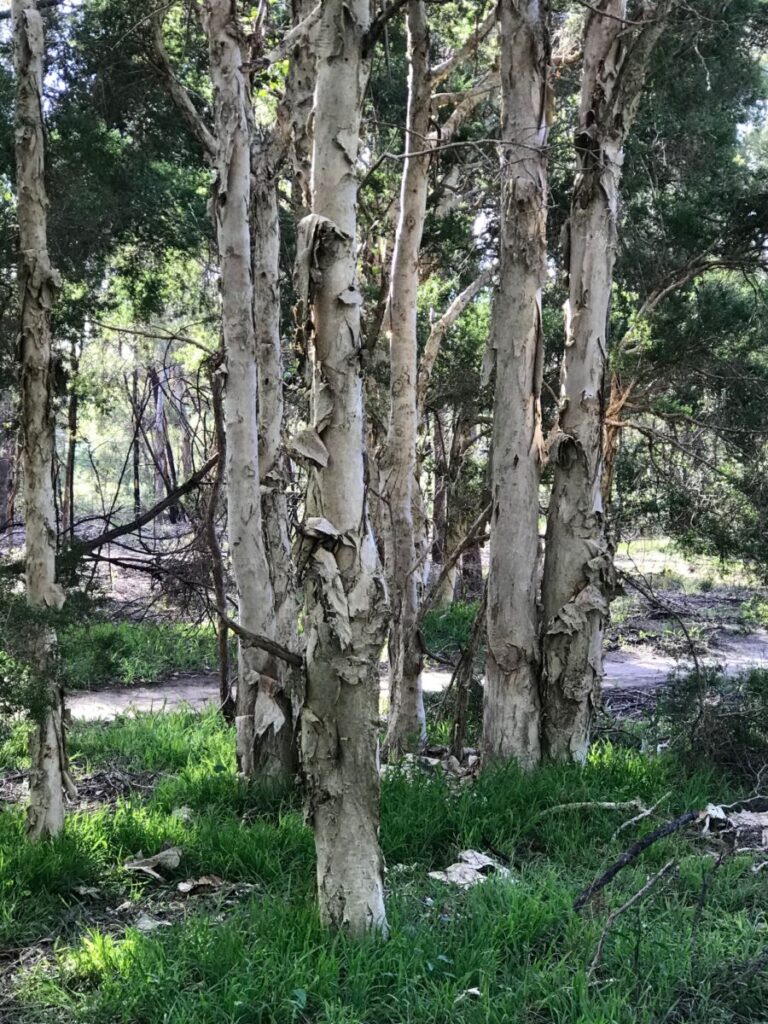
Acacia pubescens
The timing of our walk coincided with the flowering of Acacia pubescens (Downy Wattle), a plant which is listed as vulnerable but which flourishes in the reserve. We were not disappointed. There were several stands of very healthy plants all flowering beautifully.
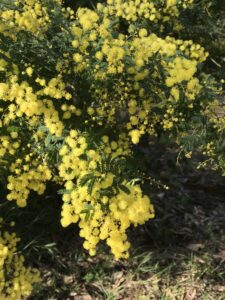
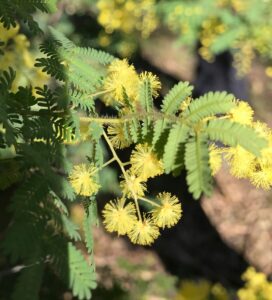
We were fortunate to have a list of the plants identified as occurring in reserve prepared by Tony Price, a retired school teacher and member of the Friends of Duck River. In the 1970s he spent three years surveying and collecting plants in the Auburn area particularly the remnant vegetation of Rookwood Cemetery and Duck River Reserve. He compiled an extensive list of the existing plant species, recorded ecological observations, and interpolated them into a picture of the landscape and vegetation of the district at the time of European settlement. At a time when field botany was inaccessible to many, and the focus of conservation was largely on the broader scale, Price’s local scale work at these sites was unusual and important. Though never formally published, Price’s 1979 account ‘The Vegetation of Duck River and Rookwood Cemetery, Auburn’ has been cited in all subsequent work of consequence for the area. Tony Price passed away in 2010.
List of plants seen
As well as the Acacia pubescens plants we also identified the following plants:
Acacia binervia
Acacia decurrens
Acacia longifolia
Bossiaea prostrata
Calotis cuneifolia
Calotis lappulacea
Cheilanthes sieberi
Clematis aristata
Daviesia ulicifolia
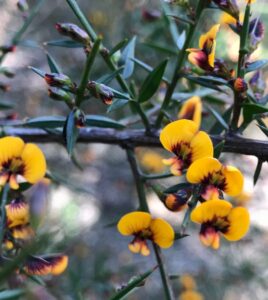
Dillwynia juniperina
Dillwynia retorta
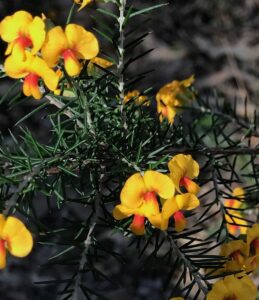
Eucalyptus fibrosa
Eucalyptus moluccana
Eucalyptus punctata
Eucalyptus tereticornis
Eustrephus latifolium
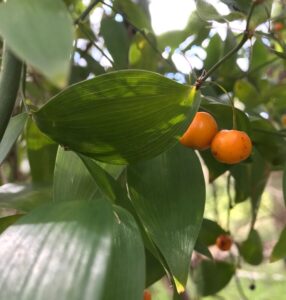
Exocarpos cupressiformis
Hakea sericea
Hardenbergia violacea
Indigofera australis
Leucopogon juniperinus
Lissanthe strigosa
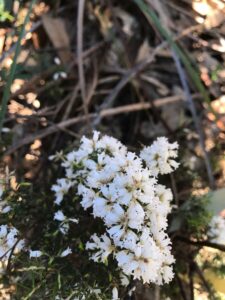
Melaleuca linariifolia
Melaleuca nodosa
Melaleuca styphelioides
Notelaea longifolia
Notelaea ovata
Pandorea pandorana
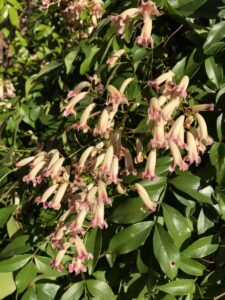
Pittosporum revolutum
Pittosporum undulatum
More information
My thanks to Tony Maxwell for sourcing the following article about Tony Price.
Alison Hewitt “Revisiting Tony Price’s (1979) account of the native vegetation of Duck River and Rookwood Cemetery, Western Sydney” in Cunninghamia 17/6/2013
All photos by Jennifer Farrer, APS Parra Hills Group
